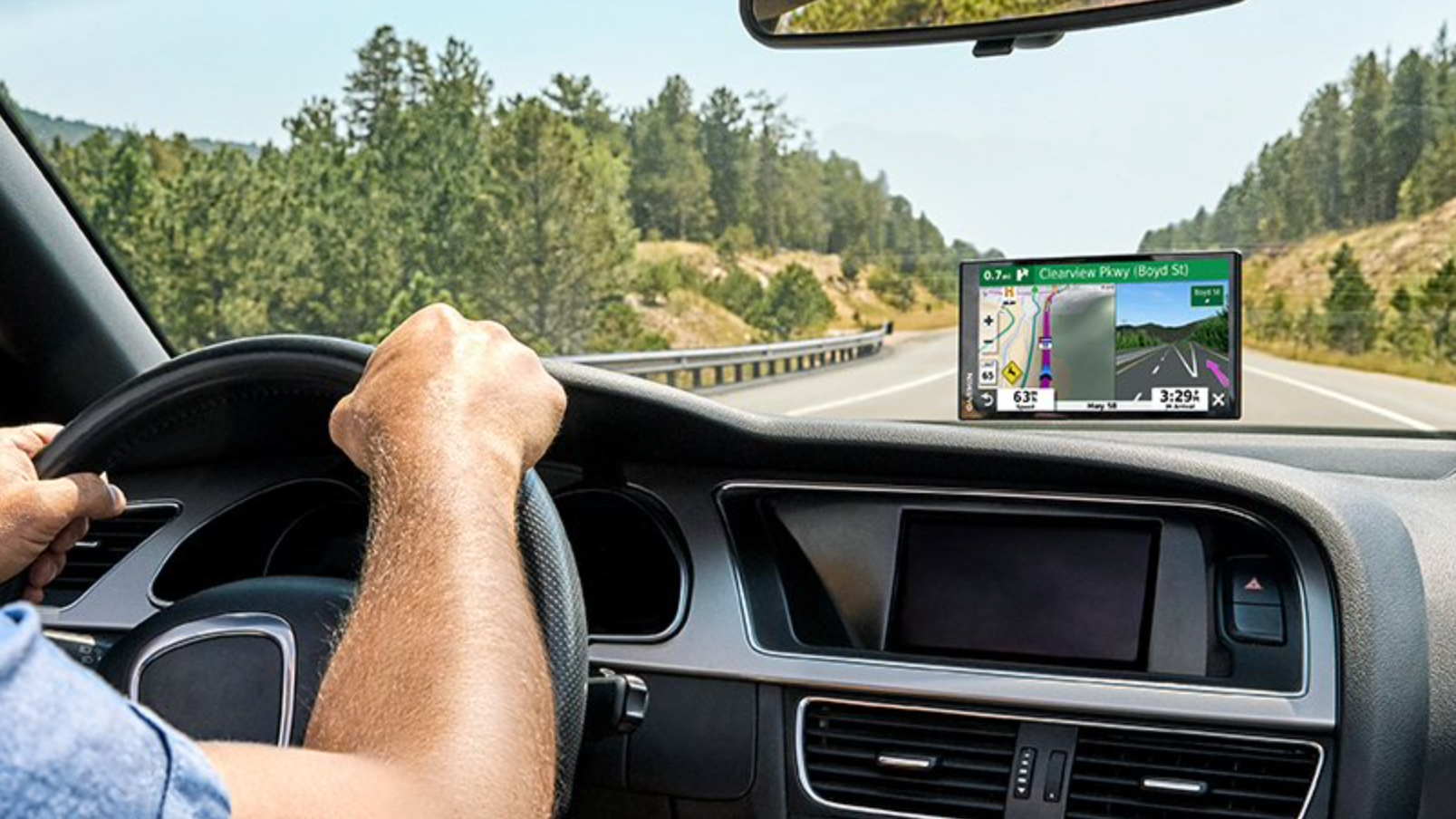

There is no ignoring the fact that most of us now use our smartphones for satellite navigation. Apps like Google Maps, Waze and Apple Maps have changed the game when it comes to getting from A to B, and systems like Apple CarPlay and Android Auto (and don’t forget Android Automotive) make it easier and safer than ever to use phone apps in the car.
But smartphone mapping apps have always felt like a convenient alternative to the dedicated navigation system, rather than a much better one. Market leaders TomTom and Garmin are still very much in business, each offering a range of navigation units across a broad range of prices.
Both companies make the best sat nav systems out there, with live traffic data, speed camera alerts and lane guidance, plus additional features like voice control, companion smartphone apps, Amazon Alexa and worldwide mapping data.
But which is the better sat nav brand, Garmin or TomTom? Here is a closer look at the current offerings of both to help you decide.

Garmin vs TomTom: Hardware options
To our eyes, Garmin’s navigation units are sleeker than those by TomTom, and look more modern as a result. The Garmin range is made up of three devices, called the Drive 52, DriveSmart 55 and DriveSmart 65.
The names of these products refer to the size of their touchscreens, which are five, 5.5 and 6.95 inches respectively. They are priced from £149.99 to £269.99.
Now to the TomTom range, and we have three models each with two screen size options. These are called the GO Classic (five or six inches), GO Essential (five or six inches) and the GO Discover (six and seven inches). They are priced from £119.99 to £279.99.
Sign up to the T3 newsletter for smarter living straight to your inbox
Get all the latest news, reviews, deals and buying guides on gorgeous tech, home and active products from the T3 experts
They all share the same general design, but the Essential and Discover have a more convenient click-and-drive mounting system; those two also have an HD screen resolution, which the GO Classic does not.
Garmin vs TomTom: Software and features
The entry-level Garmin Drive 52 can be bought with maps of just the UK and Ireland (£119.99) or with all of Europe (£149.99). It misses out on hands-free phone calling and Amazon Alexa, but includes real-time services like live traffic, weather and parking data, plus millions of points of interest provided by Foursquare and integrated reviews of hotels and restaurants from TripAdvisor.
The £189.99 DriveSmart 55 includes hands-free calling, plus voice control, wireless software updates, smart notifications, and all of the DriveSmart 50’s aforementioned features.
The flagship of the Garmin navigation range is the DriveSmart 65, which costs £229.99 and has a much larger 6.95-inch display and all the features of the DriveSmart 55. It can also be bought with integrated Amazon Alexa, with that model costing £269.99. Alexa can be used to play music, check your calendar and to-do list, receive news briefings, get directions and even control your smart home devices while on the road.

Garmin’s navigation systems use Garmin Real Directions, which are described as “like a friend” and use street names, shop names and recognisable landmarks to help you make the right turn. Alerts for upcoming sharp curves, speed changes, railway crossings and more can be enabled.
An important thing to note is that the Garmin Digital Traffic service will cease to exist in the UK from 30 Jun 2021, due to the provider discontinuing the service. Instead, users are asked to use Garmin Live Traffic, which uses your smartphone’s data connection to send live traffic information to the navigation unit. Without a smartphone, Garmin sat navs will receive less detailed and frequent traffic information from the RDS-TMC Traffic service.
Over to the TomTom range, and all three come with live speed camera data, but this is included for free for just a month on the GO Classic, six months on the GO Essential and a year on the GO Discover. The former two have maps of Europe and the latter has maps of the entire world.
All three receive updates via Wi-Fi, but TomTom says the flagship GO Discover updates three times faster than the others. This model is also the only one to feature moving lane guidance, where the display shows clearly which lane to be in when approaching complex junctions. Also unique to the GO Discover is TomTom’s New Live service, which includes up-to-day information on fuel prices, off-street parking and points of interest.
The Go Essential and GO Discover have voice controls, but the entry-level GO Classic misses out on this particular feature.
Garmin vs TomTom: Which is best?
Both companies offer a very similar experience, and a similar range of hardware options. We feel the Garmin products look better than those by TomTom, but the crucial factor here should be which mapping system you prefer.
Clarity of both the graphics and spoken instructions is the most important factor when it comes to buying a sat nav, followed by the availability of connected services like traffic, speed cameras, and useful extras like voice control and Amazon Alexa.
Liked this?
- Best sat nav: including TomTom, Garmin and more
- Best dash cam: top car dash cams tried and tested
Alistair is a freelance automotive and technology journalist. He has bylines on esteemed sites such as the BBC, Forbes, TechRadar, and of best of all, T3, where he covers topics ranging from classic cars and men's lifestyle, to smart home technology, phones, electric cars, autonomy, Swiss watches, and much more besides. He is an experienced journalist, writing news, features, interviews and product reviews. If that didn't make him busy enough, he is also the co-host of the AutoChat podcast.
-
 These luxury private members’ clubs have their own race tracks
These luxury private members’ clubs have their own race tracksFrom the UK to the US and Japan, these are the world’s most exclusive race track members’ clubs
By Alistair Charlton Published
-
 Apple TV+'s beloved sci-fi series gets a surprise sequel and trailer
Apple TV+'s beloved sci-fi series gets a surprise sequel and trailerWondla is coming back
By Max Freeman-Mills Published